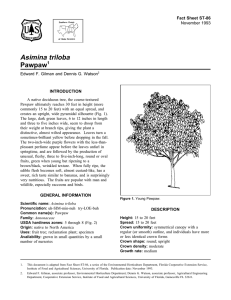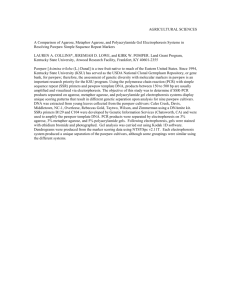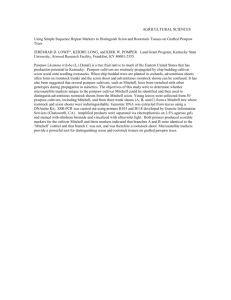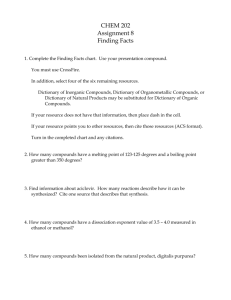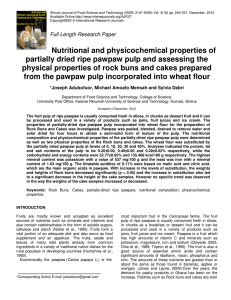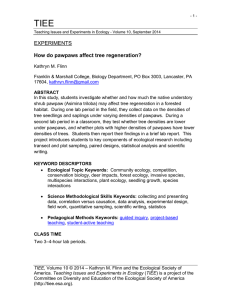Pawpaw Research at Purdue University As noted earlier, pawpaws
advertisement
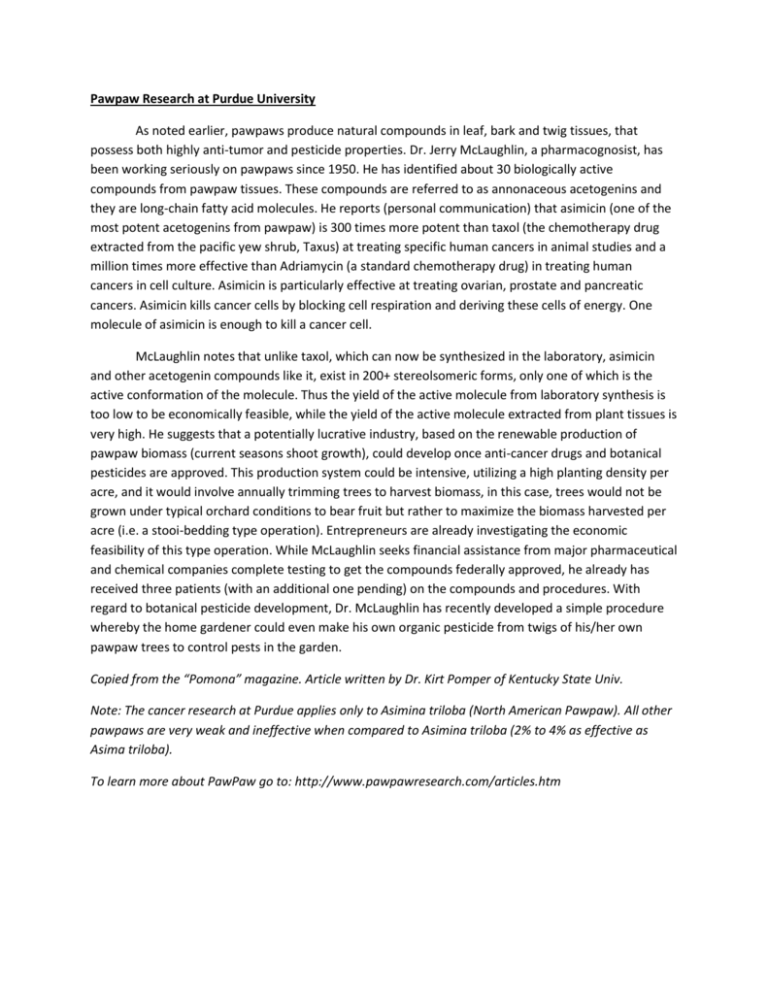
Pawpaw Research at Purdue University As noted earlier, pawpaws produce natural compounds in leaf, bark and twig tissues, that possess both highly anti-tumor and pesticide properties. Dr. Jerry McLaughlin, a pharmacognosist, has been working seriously on pawpaws since 1950. He has identified about 30 biologically active compounds from pawpaw tissues. These compounds are referred to as annonaceous acetogenins and they are long-chain fatty acid molecules. He reports (personal communication) that asimicin (one of the most potent acetogenins from pawpaw) is 300 times more potent than taxol (the chemotherapy drug extracted from the pacific yew shrub, Taxus) at treating specific human cancers in animal studies and a million times more effective than Adriamycin (a standard chemotherapy drug) in treating human cancers in cell culture. Asimicin is particularly effective at treating ovarian, prostate and pancreatic cancers. Asimicin kills cancer cells by blocking cell respiration and deriving these cells of energy. One molecule of asimicin is enough to kill a cancer cell. McLaughlin notes that unlike taxol, which can now be synthesized in the laboratory, asimicin and other acetogenin compounds like it, exist in 200+ stereolsomeric forms, only one of which is the active conformation of the molecule. Thus the yield of the active molecule from laboratory synthesis is too low to be economically feasible, while the yield of the active molecule extracted from plant tissues is very high. He suggests that a potentially lucrative industry, based on the renewable production of pawpaw biomass (current seasons shoot growth), could develop once anti-cancer drugs and botanical pesticides are approved. This production system could be intensive, utilizing a high planting density per acre, and it would involve annually trimming trees to harvest biomass, in this case, trees would not be grown under typical orchard conditions to bear fruit but rather to maximize the biomass harvested per acre (i.e. a stooi-bedding type operation). Entrepreneurs are already investigating the economic feasibility of this type operation. While McLaughlin seeks financial assistance from major pharmaceutical and chemical companies complete testing to get the compounds federally approved, he already has received three patients (with an additional one pending) on the compounds and procedures. With regard to botanical pesticide development, Dr. McLaughlin has recently developed a simple procedure whereby the home gardener could even make his own organic pesticide from twigs of his/her own pawpaw trees to control pests in the garden. Copied from the “Pomona” magazine. Article written by Dr. Kirt Pomper of Kentucky State Univ. Note: The cancer research at Purdue applies only to Asimina triloba (North American Pawpaw). All other pawpaws are very weak and ineffective when compared to Asimina triloba (2% to 4% as effective as Asima triloba). To learn more about PawPaw go to: http://www.pawpawresearch.com/articles.htm
